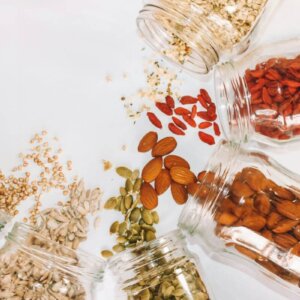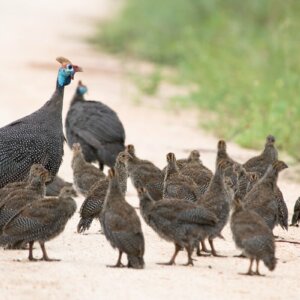Editor’s Note: Today is the Word Food Day as well as Blog Action Day 2011! To celebrate, we’re posting about food and offering different perspectives on the food system.
Many convincing arguments have been made about why meatless diets are good for your health and the environment. But human carnivorous-ness runs deep, and there are many for whom the vegan or vegetarian lifestyle isn’t a reality.
So what’s a conscious carnivore to do? With different labels like “natural,” “organic,” “free-range,” and “grass-fed” competing for your attention, it can be hard to know which type of meat comes with the lowest health risk and carbon footprint.
So here are some of the most distinguishing points about each of these labels, including what they do and don’t promise about the way the meat was raised and processed.
Certified USDA Organic

What it means: Animals are fed organic feed and raised without the use of antibiotics, growth hormones, or any synthetic substances. Animals have access to pasture and be allowed to engage in their natural grazing behaviors. Slaughter and production must take place in a certified facility and the use of synthetic processing agents, sulfites, nitrates or nitrites is prohibited.
What is doesn’t mean: Even organic meat can be housed and finished in crowded feed lots, and there’s still a high probability that most of the animals’ diet is grain rather than grass.
Natural
What it means: Meat undergoes minimal processing and contain no artificial flavors or colors, no chemical preservatives and no other synthetic ingredients.
What it doesn’t mean: There is no certification process for products bearing a natural label, so it’s never certain whether or not companies actually meet these vague requirements. The “natural” label also does not restrict the use of growth hormones, antibiotics, animal-by products, or consider the animal’s welfare.
Grass-Fed

What it means: The animals were allowed to graze in pastures and spend no time in a feedlot setting. As the name implies, the grass-fed label also means that the animals fed on grass rather than grain feeds which could contain meat byproducts. Although it’s not guaranteed, grass-fed animals are often raised without the use of antibiotics and hormones.
What it doesn’t mean: Some grass-fed animals are finished on grain feed, which means there could be exposure to chemical additives, meat byproducts, and GMOs.
Free-Range
What it means: Currently, USDA standards for free-range only apply to poultry, so if you see this term used for beef or pork, know that it is not regulated. While this label does require that birds are allowed access to the outside, it does not stipulate how large the outside space should be, or how many hours a day this access is provided.
What it doesn’t mean: This label says nothing about what the animal was fed or whether hormones and antibiotics were administered. Although the two terms often appear next to each other, free-range does not mean organic.
Certified Humane
What it means: The animal’s treatment and environment met Humane Farm Animal Care program standards, which include a nutrious diet without antibiotics or hormones, animals raised with shelter, resting areas, sufficient space and the ability to engage in natural behaviors.
What it doesn’t mean: The Certified Humane label is most concerned with the way animals are handled, and doesn’t necessarily mean organic or free-range.








































Leave a Reply